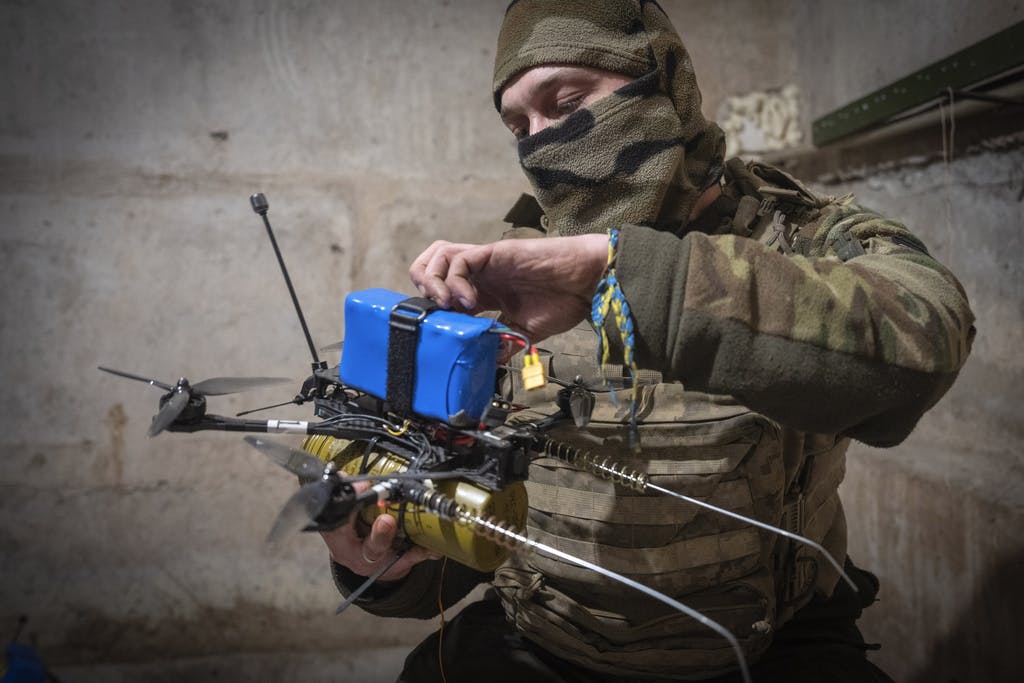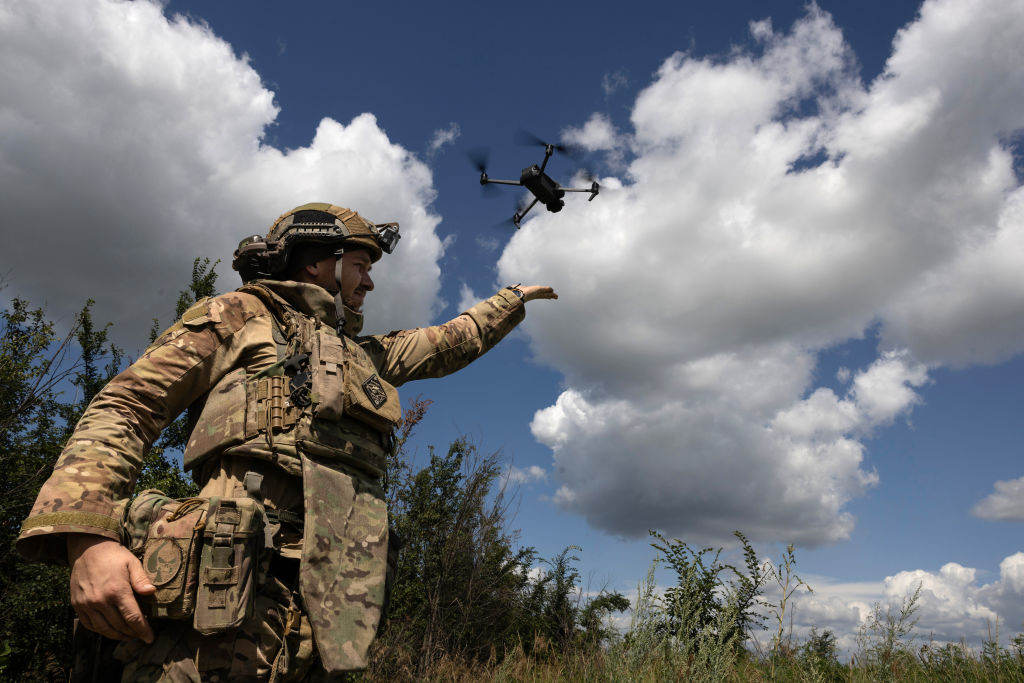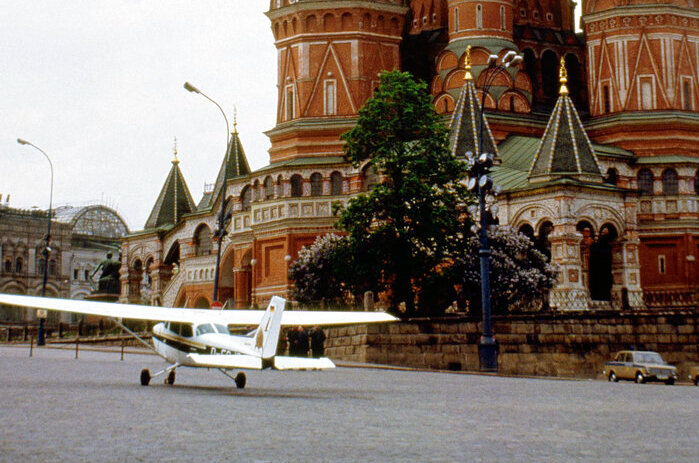‘Ein Schock für Putin’: Ukraine Bombs Three Russian Air Bases, Then Vows To Send Its Drones Further Into Russia
Not since 1987, when a West German teenager flew a rented Cessna to Moscow’s Red Square, has there been such a failure of Russian air defenses.

Ukrainian drones, ducking Russian air defenses, yesterday hit three air bases Russia uses to bomb Ukraine. The drones reportedly hit half of 29 Sukhoi warplanes parked at Morozovsk base.
Pushing the bill up to hundreds of millions of dollars, Ukraine said its drones also destroyed three Tu-95MS bombers at Engels-2 base, and two Su-25 warjets at a third base. In response, Russia said only that its air defense downed a total of 53 Ukrainian drones approaching the three bases.
Over the last two years, Ukraine has used drones and rockets to sink one third of Russia’s warships in the Black Sea. Now, Ukraine is turning its drone power on land targets — air bases, refineries and military factories deep inside Russia. That reach was demonstrated Tuesday when Ukrainian drones flew a record 800 miles east into Russia. They hit Russia’s third-largest oil refinery and a factory making Iranian-designed Shahed drones.
This week’s raids may be a taste of what’s to come this year for Russia’s air force and air defenses. Ukrainian officials say this year they will produce thousands of long range drones and 1 million short range drones. Yesterday, German newspaper Bild reported that 10 Ukrainian factories will soon start producing “Falcon-300” drones with ranges of 1,500 miles.
That is longer than a flight from Toronto to Miami. It would put within range 80 Russian military bases, including Olenya, an Arctic air base that launches Tu-95 MS strategic bombers against Ukraine. A Ukrainian source told Bild, Europe’s best selling newspaper: “Missiles are a thing of the past — drones are the future.” Bild summarized the impact: “Ein Schock für Putin.”
Last month, the crippling of Russia’s Black Sea fleet prompted President Putin to purge the high command of Russia’s Navy. Similarly, Russia’s air defense forces show scant sign of adapting fast enough to Ukraine’s drone war against land sites. In the last two months, Ukrainian drones have hit 15 Russian refineries, knocking offline about 15 percent of the nation’s refining capacity.
Last month, gasoline exports dropped in half. This month, diesel production is to drop by 20 percent. Yesterday, world oil prices topped $90 a barrel for the first time since October. Complicating repairs, Russia’s 40 largest refineries were rebuilt since the collapse of communism in 1991 with western technology. Due to war sanctions, this technology is now off limits to Russian companies.

“The scale of recent attacks and the ineptitude of Russian air defenses were quite surprising,” energy analyst Sergey Vakulenko wrote yesterday for the Carnegie Endowment’s Politika blog. “The latest wave of attacks signifies a major shift in modern warfare. Navigational equipment, including solid-state inertial systems that are impervious to jamming and signal spoofing, is now affordable and abundant.” He concludes: “In a war of attrition, the odds are with the drones.”
Two months ago, President Zelensky announced the formation of a separate branch of the military devoted to drones. Over the last two years, the number of Ukrainian drone factories has risen to 300, from a dozen before the war.
“It is clear that drones in this war will be one of the decisive words for victory, and it must be a Ukrainian word, Ukrainian drones, a Ukrainian victory,” Mr Zelensky said Monday night in his daily address to the nation. “We need more drones and more effective Ukrainian drones.”
Ukraine’s move toward long-range, locally produced drones comes after America and other donor nations asked Ukraine to not use their rockets against targets inside Russia. Giorgi Revishvili wrote Wednesday in the Atlantic Council’s Ukraine blog: “Drones are significantly cheaper to produce in large quantities than long-range missiles and require less infrastructure.”
Ukrainian officials brush off protests that they should not bring the war into Russia. They say that Russia over the last two years has fired 4,630 Iranian-made Shahed drones at them. Ukraine’s prime minister, Denys Shmyhal, told Estonian Public Broadcasting last week: “Russia continues its energy terror and just in the last weeks they destroyed more than six gigawatts of facilities in our energy [sector] in hydro energy, in coal power energy.”
The Washington-based Institute for the Study of War said Tuesday: “Ukrainian strikes are a necessary component of Ukraine’s campaign to use asymmetric means to degrade industries that supply and support the Russian military.”

Faced with waves of incoming drones, Russian authorities limit their public statements to citing numbers of drones shot down. They release little or no information on the impacts of the drones that get through. However, with columns of black smoke rising over refineries, air bases and military factories, it is clear to inhabitants of Western Russia that Ukraine is running roughshod over Mr. Putin’s red lines.
The attacks chip away at Mr. Putin’s image as the nation’s great protector. After this week’s attacks on Tatarstan, Governor Rustam Minnikhanov told companies they were on their own to defend themselves. Head of the republic for 14 years, he warned: “Do not wait for the response of the air defense; it has other missions. We must find our own solution, every company, every municipality and every town.”
Last night’s failure of Russia’s air defense is reminiscent of the May 1987 flight of West German teenager Mathias Rust. Ducking Soviet air defenses, he flew his rented Cessna to Moscow from Finland, landing on a bridge in front of the Kremlin and taxiing to a stop on Red Square. Soviet leader Mikhail Gorbachev used this humiliating stunt as a pretext to carry out the biggest purge of the Soviet military in 50 years. Four years later, the Soviet Union collapsed.

